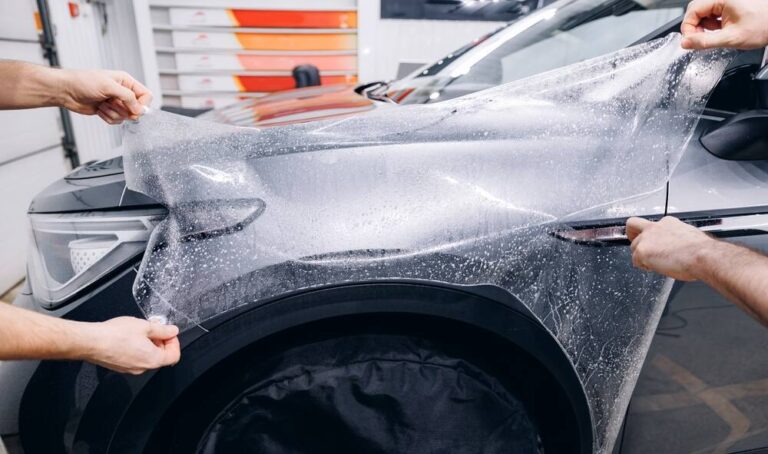Plastics have become an indispensable material in the automotive industry, offering advantages such as lightweight properties, durability, and cost-effectiveness. Over the decades, the use of plastics in cars has expanded from simple interior components to essential structural and functional parts that enhance vehicle performance, safety, and aesthetics. The continued innovation in plastic materials has played a significant role in shaping modern automobiles.
Plastic Body Panels and Lightweight Construction
One of the earliest and most notable applications of plastics in automobiles is in body panels. Glass Reinforced Plastic (GRP or fiberglass) has been used for making car body shells since the 1940s – the first being the Glasspar sports car from California in 1949, named after the material. Because GRP could be both strong and made in simple molds (without expensive stamps and presses needed for the production of steel panels) they were often used by low-volume specialist car makers such as Lotus and Reliant. The Chevrolet Corvette, which has been in production since 1953, was one of the pioneers in utilizing fiberglass-reinforced plastic (FRP) for body panels. This material helped make the Corvette not only lighter but also resistant to corrosion.
It took longer for non-structural injection molded plastic panels to appear on cars. The The Citroën DS of 1955 introduced many technical innovations, one of which was a cabin roof panel made of translucent plastic. The Pontiac Fiero, produced between 1984 and 1988, was among the first mass-produced cars to feature plastic body panels mounted on a steel space frame. This innovation allowed for a reduction in weight without compromising strength, leading to improved fuel efficiency. Similarly, the Saturn S-Series, produced during the 1990s and early 2000s, featured dent-resistant polymer body panels, showcasing the durability and practicality of plastics in automotive exteriors. In this era the enduring Corvette moved from GRP panels to thinner, lighter sheet molding compound body elements on an aluminum frame.
Plastics in Car Interiors
The use of plastics in car interiors dates back to the 1940s and 1950s when manufacturers started using them to make small items such as knobs, dials and switches. As well as its plastic roof panel, the Citroën DS also featured the first dashboard with plastic mouldings. By the 1960s and 1970s, plastic materials became more widespread in interiors, with a significant milestone being the adoption of padded dashboards for improved safety. The 1967 Pontiac Firebird, for example, featured a padded dashboard designed to reduce impact injuries in the event of a crash. Today, plastics remain a dominant material in car interiors. Acrylonitrile Butadiene Styrene (ABS) is widely used in dashboards due to its strength and resistance to impact. Polycarbonate is commonly found in instrument cluster lenses, offering excellent clarity and durability. Additionally, polypropylene is a preferred material for door panels and seats, thanks to its lightweight nature and resistance to wear and tear.
Plastic Engine Components
Plastics have also found their way into engine components, significantly contributing to weight reduction and enhanced performance. A major breakthrough in this area was the introduction of plastic intake manifolds, with the 1990 BMW M50 engine being one of the first to feature this innovation. Compared to traditional metal manifolds, plastic versions offer weight savings, improved airflow efficiency, and resistance to corrosion. Many modern vehicles also utilize Nylon 6/6 composite valve covers, which provide high strength while remaining lightweight. Additionally, plastic materials such as PA6-GF (Glass-Filled Nylon) are used in components like oil pans and radiator parts, offering advantages in terms of durability, corrosion resistance, and thermal stability.
Paint Protection Films
Another critical application of plastics in the automotive industry is protective film for cars. Paint protection films (PPF) was originally developed for military helicopter blades during the Vietnam War. Made from various formulations of clear polyurethane sheet, this technology was later adapted for commercial automotive use in the 1990s. Brands like 3M and XPEL have pioneered the development of high-quality PPF products that help protect car exteriors from scratches, chips, and UV damage. These films are virtually invisible, ensuring that vehicles maintain their original aesthetic appeal while being safeguarded against environmental and physical wear.
The Future of Plastics in Automotive Design
As the automotive industry continues to evolve, plastics will remain at the forefront of innovation. The push for more fuel-efficient and environmentally friendly vehicles has led to an increased focus on lightweight materials, making advanced plastic composites more critical than ever. Additionally, the rise of electric vehicles (EVs) presents new opportunities for plastics in battery casings, interior components, and structural elements designed to optimize performance and safety.
Plastics have undoubtedly transformed the automotive industry, contributing to advancements in design, performance, and safety. Their lightweight properties help improve fuel efficiency, while their durability ensures long-lasting and resilient vehicle components. With ongoing technological developments, plastics will continue to play a crucial role in shaping the future of automobiles, driving innovation and efficiency in the years to come.

